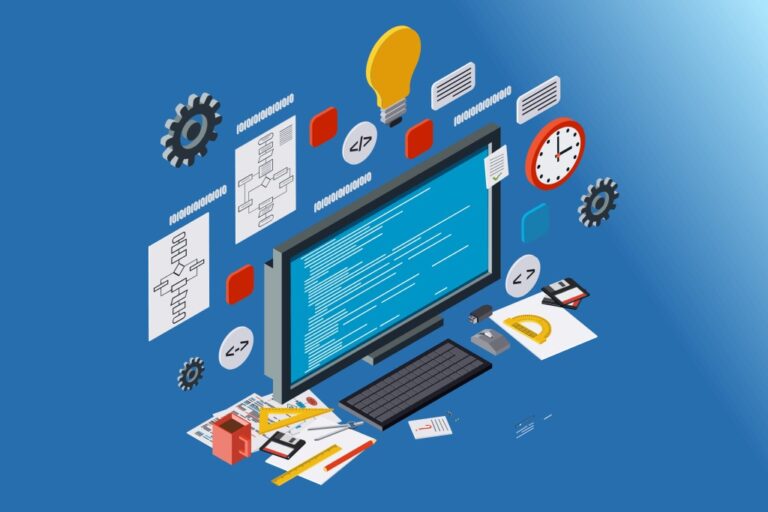In 2025, the idea of building a profitable side hustle has become more than just a trend—it’s a necessity for many. Rising living costs, unstable economies, and a growing digital landscape have pushed people to think beyond their 9-to-5 jobs. But here’s the challenge: how do you grow a side business without draining yourself or hurting your full-time job performance?
The truth is, it’s completely possible. I’ve spent months researching this topic—watching what works, what fails, and what’s changing. If you’re aiming to start smart, not just start fast, this guide will give you practical, no-fluff advice to help you succeed.
Key Highlights
- Time management is the key to balancing a side hustle with full-time work.
- Choose a business model that scales without constant hands-on effort.
- Use platforms that automate or enhance marketing efforts.
- Start with low-risk, low-overhead ideas before scaling.
- Keep your employer in the loop—when necessary—for legal and ethical reasons.
- Focus on services or products that solve problems or fulfill daily needs.
Choose the Right Type of Side Hustle

Not every idea fits into a full-time schedule. If you work a demanding job, the last thing you want is a hustle that needs constant attention. So, the first step is choosing the right type of side hustle that doesn’t rely on being “always on.”
Some of the best options in 2025 include:
- Digital products (like templates, courses, or ebooks)
- Freelance services (copywriting, graphic design, or coding)
- Print-on-demand stores
- Affiliate marketing or content creation
- AI-powered tools or reselling services
For those into social media, automation has made content growth easier than ever. Platforms like SocialWick or InstantFamous help you boost engagement quickly and affordably without needing to spend hours building an audience. Whether you’re growing an Instagram brand or launching a YouTube channel, these platforms offer a shortcut many use quietly but effectively.
Protect Your Time Like It’s Money
A common mistake is underestimating how much time you actually have after work. Once you subtract meals, family time, chores, and downtime, there are maybe 2–3 focused hours available on a good day.
The trick isn’t to find more time—it’s to manage it smarter.
- Use batching: Group similar tasks together—e.g., writing blog posts, designing graphics, or handling customer emails—so you’re not constantly switching gears.
- Set time blocks: Reserve specific slots in your calendar for your side hustle. Treat these like non-negotiable appointments.
- Avoid burnout: One of the fastest ways to kill your momentum is to burn out in the first three months. Give yourself rest days and allow flexibility.
You’re not building an empire overnight. Focus on consistency over intensity.
Monetize Smart from the Start

A lot of people pour hours into their side projects without ever getting paid. That’s fine if it’s a hobby—but if profit is the goal, you need to think about monetization early.
Here’s what that looks like:
- If you write – build a newsletter, offer affiliate recommendations, or create downloadable resources.
- If you sell services – use freelance platforms (Fiverr, Upwork) to gain early traction, and build your own site over time.
- If you sell products – focus on MVPs (minimum viable products). Don’t stock up inventory unless you’re 100% sure there’s demand.
Avoid perfectionism. Launch lean, learn, and then improve.
Use Tools That Save Time and Scale
You’re balancing two careers now—so make tech your assistant. In 2025, there are tools for nearly everything. From AI-powered content generators to task managers and auto-responders, you can eliminate 50% of manual work with the right setup.
Here are some essentials:
- Notion or Trello – organize tasks and plans
- Canva or Figma – for visual content
- ConvertKit or MailerLite – email marketing made simple
- Zapier – connect apps and automate repetitive tasks
- SocialWick – social media growth for brand trust and visibility
Using tools isn’t “cheating”—it’s working smarter. The goal is to build leverage: systems that grow even when you’re not actively pushing.
Stay Legally and Professionally Safe

It’s easy to overlook this part, but if you’re employed full-time, you need to be clear about two things:
- Does your employment contract allow side businesses?
Many contracts—especially in tech or finance—have non-compete clauses or IP ownership terms. - Are you using company resources?
Never use your employer’s laptop, tools, or time to work on your side hustle. It’s not just unethical—it can legally backfire.
When in doubt, talk to HR or your manager. Transparency now avoids problems later.
Keep Growth Sustainable
It’s tempting to say yes to everything when you see your side hustle making money—but that’s when it becomes dangerous. If you’re not careful, the hustle takes over your life and starts hurting your day job, health, or relationships.
To avoid this:
- Set monthly goals based on output, not time (e.g., “Finish 3 client projects,” not “Work 10 hours”).
- Reinvest profits into automation, marketing, or outsourcing.
- Know your limits. If demand grows beyond what you can handle, consider turning the side hustle into a team effort—or reassess your goals.
A profitable side hustle is about freedom, not pressure. If you’re constantly stressed, you’re doing it wrong.
What’s Working in 2025 (And What’s Not)

What’s working:
- Niches that are underserved or highly specific (e.g., TikTok ad consulting, AI prompt engineering)
- Content + commerce combinations (a YouTube channel that sells digital products)
- Personal branding through short-form video (Reels, Shorts, TikToks)
What’s fading:
- Dropshipping without a unique angle
- Generalized freelance profiles with no clear specialty
- Side hustles with high startup costs or long learning curves
The key is to stay close to what people already need—then make it faster, easier, or better.
Final Thoughts
Building a side hustle in 2025 doesn’t mean working two full-time jobs. The best side hustles are lean, smart, and built around systems—not hustle culture. If you pick something that fits your life, set boundaries early, and use the right tools, you can grow a profitable side business without burning out or quitting your job.
Start small. Be consistent. Let the systems grow with you.
And remember—if you’re doing something that brings value to others, the money will follow. Just make sure you’re building with intention, not just following trends.
Related Posts:
- Profitable Merch Options for Independent Creators…
- Best Ways to Prepare Your Home for a Quick and…
- Home Insurance Hacks - Save Money Without Losing Protection
- How to Start a Merch Line Without Hiring a Designer
- Website Development Costs for 2025 – What’s Changed…
- Best Option Trading Books to Help You Master the…









